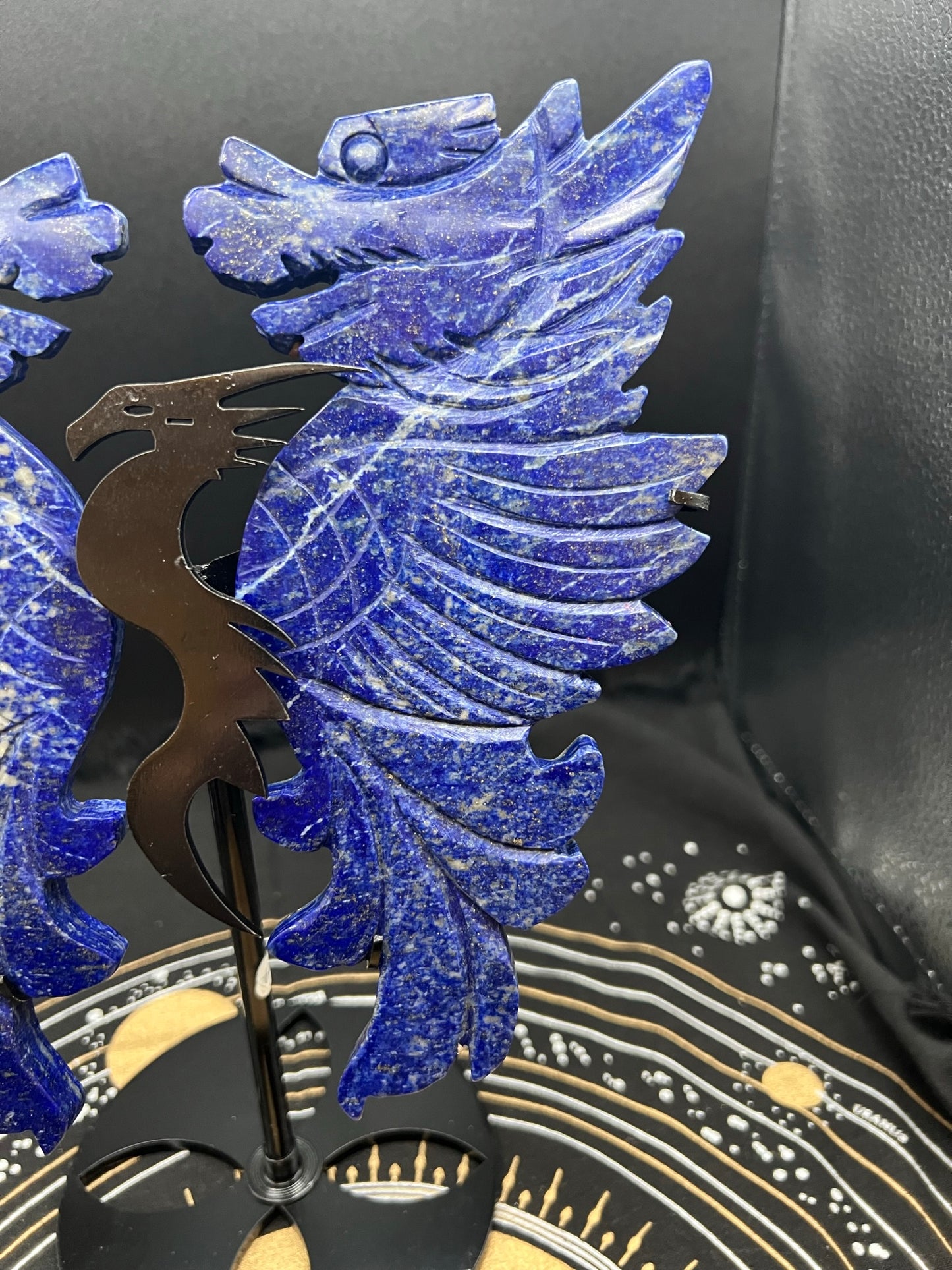Captured by Radiance Inc.
Lapis Lazuli Double Dragon Wing A001
Lapis Lazuli Double Dragon Wing A001
Couldn't load pickup availability
Lapis lazuli, also known simply as "lapis," is a blue metamorphic rock that has been used by people as a gemstone, sculpting material, pigment, and ornamental material for thousands of years. High quality lapis lazuli can be a costly gem. The most desirable specimens have a rich, solid blue color and perhaps a few reflective pieces of gold pyrite.
Unlike most other gem materials, lapis lazuli is not a mineral. Instead, it is a rock composed of multiple minerals. The blue color of lapis lazuli is mainly derived from the presence of lazurite, a blue silicate mineral of the sodalite group with a chemical composition of (Na,Ca)8(AlSiO4)6(S,Cl,SO4,OH)2.
lapis lazuli usually contain calcite and pyrite. Sodalite, hauyne, wollastonite, afghanite, mica, dolomite, diopside, and a diversity of other minerals might also be present. To be called "lapis lazuli," a rock must have a distinctly blue color and contain at least 25% blue lazurite.
Calcite is often the second most abundant mineral present in lapis lazuli. Its presence can be very obvious, appearing as white layers, fractures, or mottling. It can also be finely intermixed with lazurite to produce a rock with a faded denim color.
Pyrite usually occurs in lapis lazuli as tiny, randomly spaced grains with a contrasting gold color. When abundant, the grains can be concentrated or intergrown into distinct layers or patches. It can occasionally occur as a fracture-filling mineral.
As a rock, lapis lazuli is composed of several minerals, each with its own hardness, cleavage/fracture characteristics, specific gravity, and color. Hardness ranges from a Mohs 3 for calcite to the 6.5 of pyrite. The hardness of the material depends upon where you test it.
Disclaimer: Crystal Gemstones are known for their beauty, mental, and physical properties. In no way are we suggesting or stating that any crystal gemstones are to replace any kind of Medical Treatments.
















